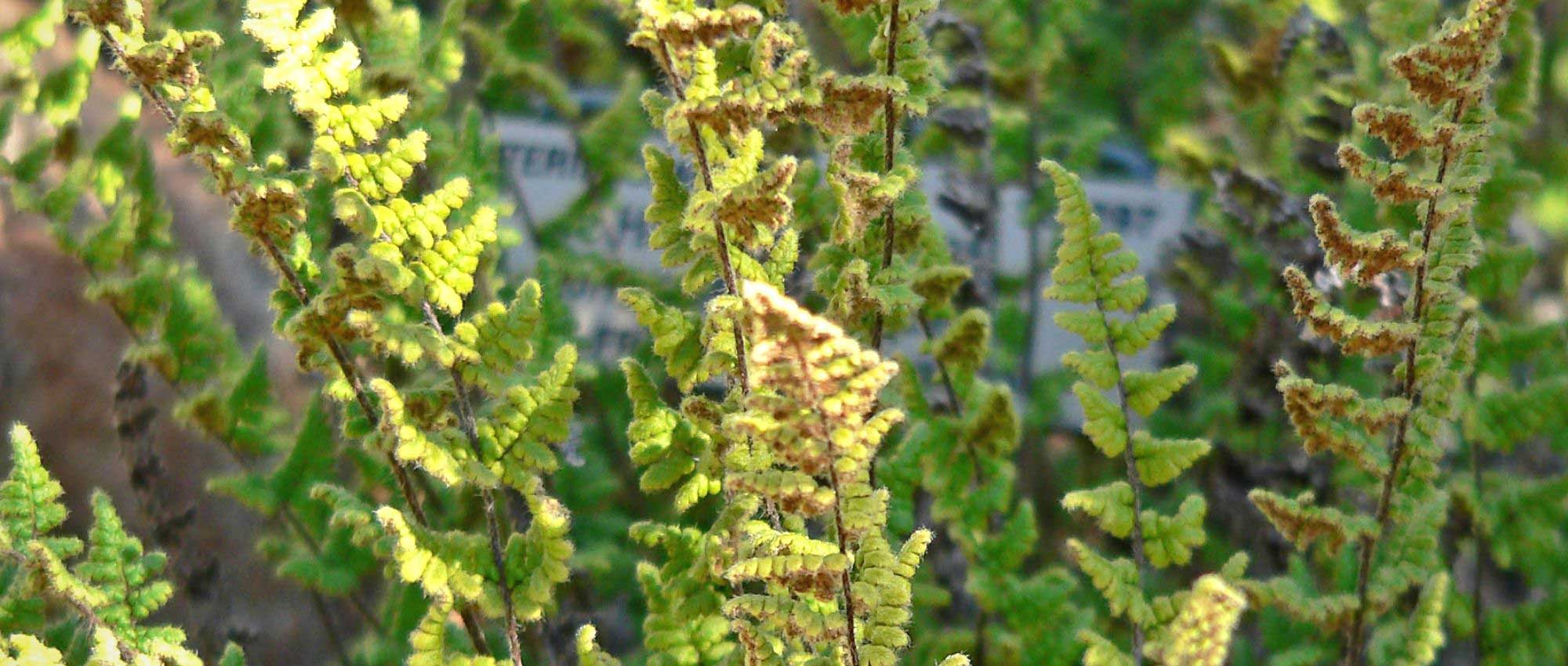
Cheilanthes: planting, growing, and care
Contents
Cheilanthes in a nutshell
- Cheilanthes is a drought-resistant fern!
- It forms clumps of beautiful grey-green, fuzzy fronds.
- It is an uncommon fern, rarely seen in gardens.
- It has the unique ability to thrive in sunny, stony, well-drained soil.
- It easily finds its place in a sunny rockery or on a stone wall.
A word from our expert
Unlike the vast majority of ferns that thrive in humid, shaded environments, Cheilanthes is uniquely adapted to sun and drought. The most well-known species is Cheilanthes lanosa, which originates from the southern United States. It forms clumps of divided fronds, grey-green in colour, covered in small silver hairs. This is an evergreen fern, retaining its foliage even in winter. There are a few other species suitable for outdoor cultivation, such as Cheilanthes tomentosa, C. argentea, and C. fragrans.
Cheilanthes is a xerophytic fern, drought-resistant. It enjoys full sun and very well-drained, stony soils. Thus, it is perfect for a sunny rock garden or on a stone wall, alongside alpine plants or succulents (houseleeks, sedums…). It is a reviviscence fern: during drought, the fronds curl up and appear dried out, but with the first rains, they will unfurl to regain their original shape! Additionally, Cheilanthes is quite hardy, tolerating temperatures down to -15 °C. It deserves to be better known and more frequently cultivated in gardens! Like other ferns, Cheilanthes does not produce flowers or seeds, but it does produce spores, which allow for propagation. However, the simplest and quickest way to obtain new plants is by dividing the clumps.
Discover in this guide all our tips for successfully cultivating Cheilanthes: including where and how to plant it, which plants to associate it with, and how to propagate it!
Botany
Botanical data
- Latin name Cheilanthes lanosa
- Family Pteridaceae
- Common name Cheilanthes, Wooly fern
- Flowering none
- Height 20 to 40 cm
- Exposure full sun or partial shade
- Soil type well-drained, stony, rather dry
- Hardiness down to -15 °C or even -20 °C
Cheilanthes are ferns that are particularly adapted to sun and drought. The most commonly cultivated is Cheilanthes lanosa, but there are actually 176 species of Cheilanthes. The vast majority are native to tropical regions and do not adapt to outdoor cultivation in our climates. However, Cheilanthes lanosa, C. fragrans, C. argentea, and C. tomentosa are quite hardy and can be planted in the garden. They can withstand temperatures between -15 and -20 °C.
Cheilanthes lanosa is native to the southern United States and northern Mexico, where it grows in arid, rocky environments. It is often found in crevices between rocks. This explains its preference for rather dry, well-drained, stony soils.
Cheilanthes belongs to the large group of Pteridophyta, which includes ferns, horsetails, and lycopods. It is truly a distinct group within the vegetable kingdom. These plants are characterised by not producing flowers or seeds, but reproducing via spores—a kind of dust carried by the fronds, which germinates in the presence of water. Ferns have their own specific vocabulary: we do not refer to leaves, but to fronds, and they do not produce seeds, but spores.
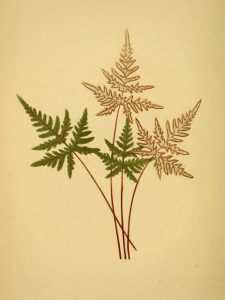
Cheilanthes argentea: Botanical illustration
Among ferns, Cheilanthes belongs to the family Pteridaceae, like Adiantum and Coniogramme emeiensis, which are also appreciated for their ornamental qualities.
Cheilanthes is not very tall; this fern measures between 20 and 40 cm in height. It develops from a rootstock and forms dense tufts of erect fronds.
The fronds of Cheilanthes are covered in silvery white hairs, which gives this fern its species name, lanosa: woolly in Latin. These hairs help the plant withstand drought by capturing dew and limiting evapotranspiration, thus reducing water loss. Additionally, their silvery grey colour reflects sunlight.
Cheilanthes bears finely divided fronds, supported by black, shiny petioles. The fronds are grey-green on the upper side of the lamina and silvery grey on the underside. They are covered in grey-white hairs. They measure between 15 and 30 cm long. The fronds of Cheilanthes have the advantage of being evergreen; they remain in place all year round, even in winter. When new fronds appear, they are beautifully curled in croziers, then gradually unfurl.
Cheilanthes argentea has fronds with a white-silver underside, very decorative and clearly visible when the fronds curl up during dry periods.

The fronds of Cheilanthes lanosa, Cheilanthes tomentosa (photo Megan Hansen) and Cheilanthes feei (photo Stan Shebs)
In times of drought, the fronds of Cheilanthes curl inwards to limit water loss. They may appear desiccated, but they regain their original shape and colour as soon as it rains again. This phenomenon is referred to as resurrection. It is the same process observed in the Rose of Jericho, Selaginella lepidophylla.
Cheilanthes produces spores in summer and autumn, allowing it to multiply. These are contained in small sacs called sori, which are rust-coloured and located on the underside of the fronds, partially covered by the folded edge of the lamina. When mature, they open and release the spores. Fine as dust, these spores are easily dispersed by the wind. They will germinate in the soil in the presence of water, giving rise to prothalli, tiny intermediate organisms that bear the reproductive organs. Water will facilitate fertilization, leading to the emergence of a new Cheilanthes plant in the form we know.

The sori, located on the underside of the fronds, are small sacs that contain the spores allowing ferns to multiply. Here, Cheilanthes sieberi (photo Harry Rose) and Cheilanthes austrotenuifolia (photo David Francis)
Read also
Ferns: growing and plantingThe main varieties of Cheilanthes
The most popular varieties
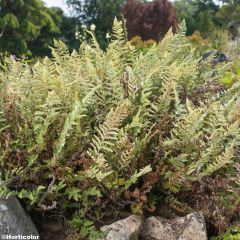
Cheilanthes lanosa
- Height at maturity 30 cm
Apart from Cheilanthes lanosa, you can also find cultivated varieties such as Cheilanthes tomentosa, C. argentea, and C. fragrans, which are relatively hardy and will tolerate being planted in the ground in well-draining soil.
Planting
Where to plant?
Unlike most ferns, Cheilanthes is not a plant of humid and shaded environments. It is best to plant it in full sun, or possibly in light shade. It requires excellent light conditions. Ideally, install Cheilanthes in a sunny rockery. You can also plant it in a dry stone wall, in a reconstructed scree, or in a scree garden. Growing it in such a mineral environment helps protect it from the stagnant moisture it fears. In any case, it is important that the soil is well-draining. Don’t hesitate to plant on a mound or in a raised rockery to ensure good water drainage.
In rainy regions, you can grow Cheilanthes in a pot, making it easy to shelter from rain in winter. Choose a draining substrate, such as potting soil mixed with coarse sand.
Regarding pH, Cheilanthes lanosa prefers slightly acidic or neutral soils, while Cheilanthes argentea enjoys calcareous substrates.
When to plant?
We recommend planting Cheilanthes preferably in spring, around April.
How to plant?
Feel free to plant Cheilanthes in groups of three to five plants for a more attractive effect.
- Dig a planting hole about twice the size of the root ball, or make some space between stones in a rockery.
- Add a draining substrate, such as a mix of garden soil and coarse sand or small gravel to speed up water infiltration into the soil.
- Remove Cheilanthes from its pot and plant it.
- Fill in by replacing some soil around the root ball.
- Lightly firm the soil.
- Water.
Continue to water a few times in the weeks following planting if it does not rain.
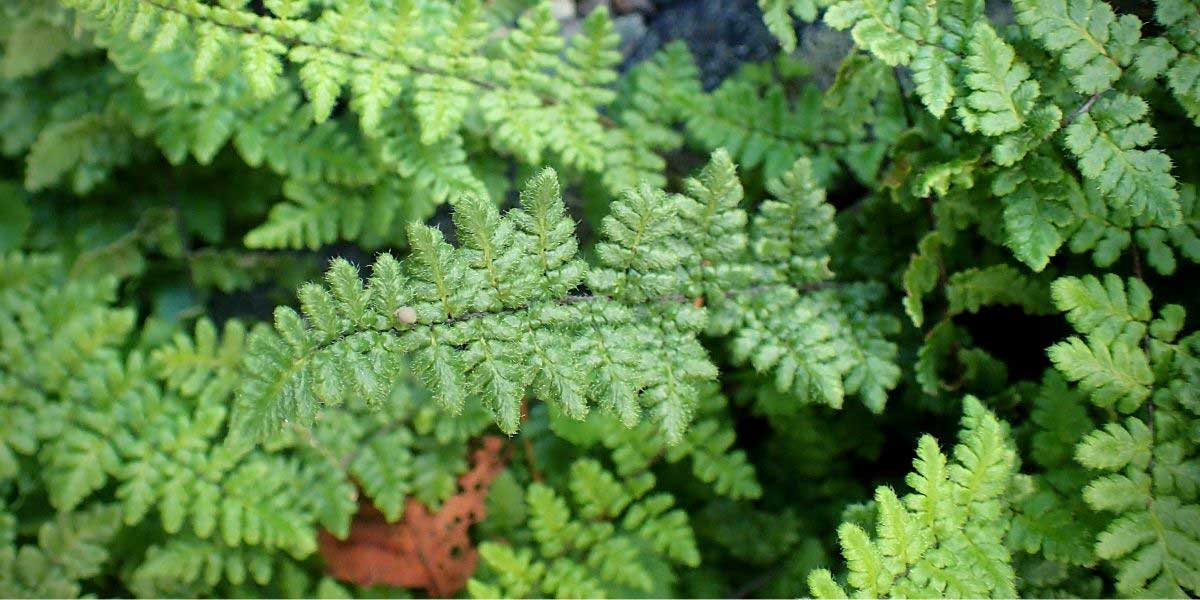
Cheilanthes lanosa (photo Krzysztof Ziarnek)
Read also
Ferns: how to choose them?Care
Cheilanthes requires very little maintenance. In addition to being drought-resistant, this fern is also very hardy. However, you can water it a little in the weeks following planting to help it establish well.
If in summer you see the leaves curled and dried, do not cut them: they fold due to drought, but they will regain their shape and colour as soon as it rains or you water them. You can, however, remove dead leaves, but do so at the end of winter, during the rainy season, to ensure they are indeed dead leaves and not dry leaves that may come back to life.
For winter, especially if you live in a rainy area, do not hesitate to shelter the Cheilanthes from the rain by installing a small structure above it. Another option is to grow it in a pot and bring it indoors to protect it from winter moisture. In any case, if you are growing Cheilanthes in a pot, be careful not to let water stagnate in the saucer. And whether grown in a pot or in the ground, it will cope better with rain if planted in well-draining soil.
Like other ferns, Cheilanthes is not particularly susceptible to diseases and pests.
Multiplication
The simplest and quickest technique to propagate Cheilanthes is by dividing the clumps.
Division of clumps
As Cheilanthes develops from rootstocks, it is quite possible to divide the clumps.
- Choose a well-developed and slightly spreading clump of Cheilanthes.
- Dig wide enough to unearth the rootstock and roots without damaging them.
- If necessary, remove excess soil to clearly expose the rootstock.
- Cut it cleanly into several sections, ensuring that each has fronds and roots.
- Replant immediately, and water.
Sowing
It is also possible to harvest and sow the spores of Cheilanthes, but this technique is longer and more delicate than division.
- Harvest the spores of Cheilanthes when they are mature (they detach on their own).
- Choose a transparent plastic or glass container.
- Place a mixture of potting soil and sifted coarse sand in it.
- Moisten it.
- Place the container with the substrate in the microwave for 10 minutes to sterilise it. This will prevent the later appearance of fungi or mosses.
- Disperse the spores on the surface of the substrate, but do not cover them!
- Then place a transparent lid or plastic wrap over the container to maintain a sterile and humid atmosphere.
- Position your sowing in a bright location, avoiding direct sunlight, ideally at a temperature of around 16 °C.
For more information and advice, feel free to consult our sheet “How to sow fern spores?”
Pairing ideas
As Cheilanthes thrives in well-drained, stony soils, feel free to plant it in a sunny rockery. You can pair it with alpine rockery plants. Consider, for example, the Eryngium alpinum, which offers a striking, silvery-blue flowering display in mid-summer. You can also integrate Edelweiss, Silene acaule, Aster alpinus, Carlina acaulis, and Dryas octopetala alongside them. Discover also the Alpine Lady’s Mantle, which features superb palmate foliage, delicately cut into green leaflets with a silvery underside. Check out our advice sheet “Alpine Perennial Plants”.
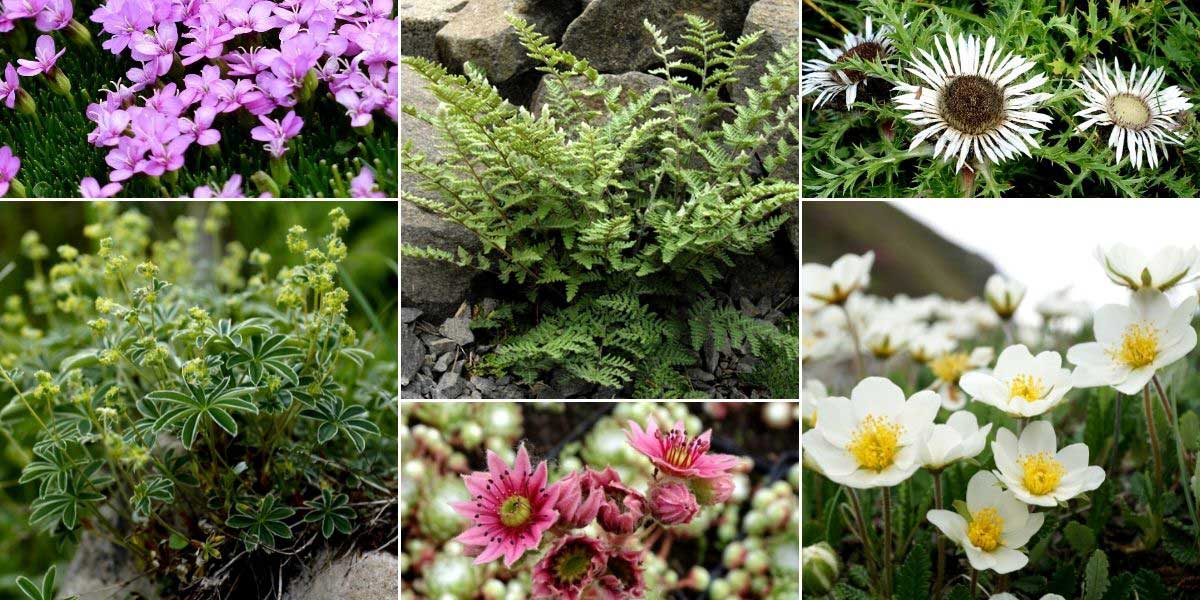
Cheilanthes will easily find its place in a rockery of alpine plants! Silene acaulis, Cheilanthes lanosa (photo ghislain118), Carlina acaulis (photo Orchi), Alchemilla alpina (photo Udo Schmidt), Sempervivum arachnoideum, and Dryas octopetala (photo Xulescu g.)
You can also plant Cheilanthes on a dry stone wall, alongside Erigeron karvinskianus, Armeria maritima, Gypsophila cerastioides, Iberis sempervirens, Helianthemum, and red valerian, Centranthus ruber. For more pairing ideas, feel free to check our sheet “10 Perennial Plants to Enhance a Low Garden Wall”.
Cheilanthes is also perfect with succulent, xerophytic plants, such as hardy cacti (like opuntias or Cylindropuntia imbricata), agaves, dasylirion, Aloe striatula, Hesperaloe parviflora, and more. Cheilanthes will easily find its place alongside houseleeks (Sempervivum) and sedums.
You can pair Cheilanthes with ferns Asplenium trichomanes and Asplenium ceterach. It will easily accompany blue fescue and Stipa tenuifolia.
Useful resources
- Discover Cheilanthes lanosa!
- Explore our wide range of ferns as well as all our advice sheets dedicated to them
- Fernatic, the French site for fern addicts
- For more tips and information on growing ferns, check out our article “Ferns: Planting and Growing”
- Subscribe!
- Contents































Comments